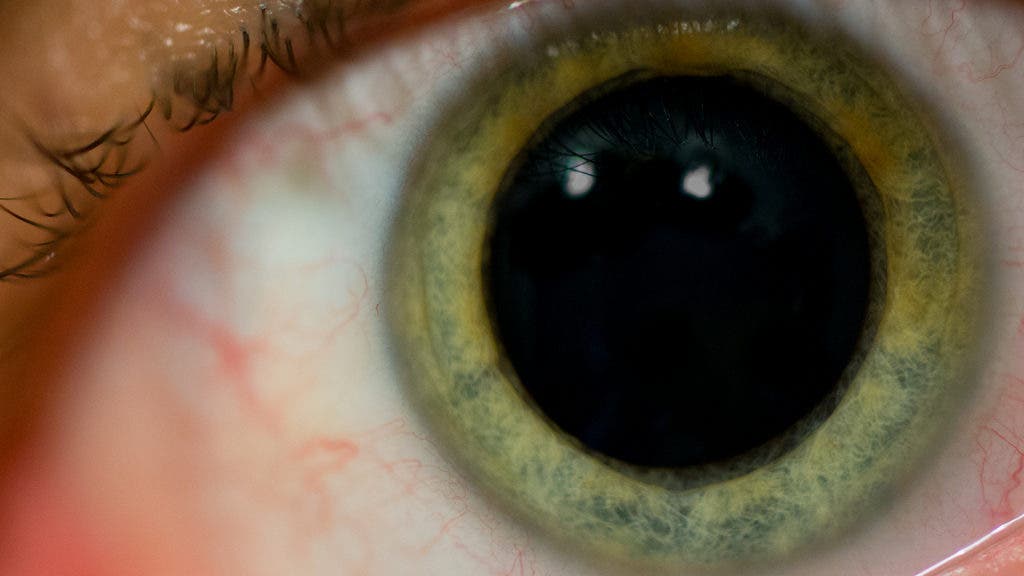A team of researchers from the Ohio State University (OSU) has found that the human brain gives off telltale signs when it’s about to stumble onto an epiphany.

Using a computer strategy game and eye-tracking technology to record pupil dilation, the researchers have captured people in the act of having an epiphany.
A numbers game
The lion’s share of learning throughout life is reinforcement learning — the kind where you work over time to build a skill or fix knowledge. In other words, the hard way. Reinforcement Learning (RL) is widely documented in scientific literature, and in practice, it can be distinguished by a gradual improvement at given task as someone gains in knowledge. A child learning to read and write will become faster and more comfortable doing these activities the more effort he puts in. A player learning a new game will shift his or her strategy throughout rounds, getting better scores as he practices.
But the arguably cooler way to learn stuff is Epiphany Learning (EL). This happens when something just clicks in your mind, and you get the problem. I’m a big fan of this eureka moment — it’s like drawing Monopoly’s get out of jail free card, only better, because it gets you out of real life hard work. I’m guessing a lot of researchers are too and would be very interested in studying it and making it happen more often — but until now we didn’t really know how to observe people going through this experience, precisely because of its spontaneous nature.
Ian Krajbich, assistant professor of psychology and economics at OSU, working with economics doctoral student Wei Chen, have managed to record an epiphany in the making. The team asked 59 students to play a computer game against an unseen opponent. The game screen showed 11 numbers (0-10) arrayed in a circle, similar to the old rotary phone setup. The game’s rules were deliberately complicated (to give the players some hassle in figuring it out) but basically, it boiled down to this: each of the players had to chose a number, and the lower pick would win. Zero thus was objectively the best number to pick in any situation, since it was the lowest.
Each participant played 30 rounds of the game, always against a different opponent. To incentivize the participants to understand the game and win, each victory was rewarded with a small sum of money. An eye-tracking camera was placed under the computer screens so that the team could monitor what numbers the students were looking at as they decided which to pick.
To determine when a player realized the trick in the game (0 always won), which would be the epiphany, the team also gave them the option of committing to playing one number for the rest of the trial after each round. They would receive more money for each win after doing so, to incentivize committing. After deciding whether to commit or not, participants were reminded what number they played, what number their opponent played, and the outcome of the game.
Eyes-on learning

By the end of the trial, 42% of players had an epiphany sometime during the game and committed to playing only zero. A further 37% committed to another number, and the remaining 20% didn’t commit at all. So how could the team tell whether a player had an epiphany or simply got lucky? Well, it’s how they played.
“There’s a sudden change in their behavior. They are choosing other numbers and then all of a sudden they switch to choosing only zero,” Krajbich explains. “That’s a hallmark of epiphany learning.”
But most excitingly, the team found they could predict when a player was about to stumble his or her way into an epiphany.
“We could see our study participants figuring out the solution through their eye movements as they considered their options,” Krajbich says. “We could predict they were about to have an epiphany before they even knew it was coming.”
“We don’t see the epiphany in their choice of numbers, but we see it in their eyes,” Chen added. “Their attention is drawn to zero and they start testing it more and more.”
It’s likely that the participants didn’t even realize they were about to have an epiphany, the authors note. The eye-tracking camera footage showed that they were looking more towards zero and other lower numbers as their brain was subconsciously crunching the game, even if they ended up picking other numbers.
The players who were struck with an epiphany also spent less time looking at the numbers their opponents picked, and more on the actual game result, win or lose. The researchers say this suggests that some players were smartening up to the fact that it’s their own choice of a lower number that determined the outcome. Another key trait of EL, its sudden nature, was also evident when the team analyzed eye time for the commitment screen. Players exhibiting EL didn’t build up confidence over time — which would be correlated to them looking at the commit button more as the trial progressed — but suddenly went for the commitment option as they understood the game.
Levels of pupil dilation also differentiated EL-ers were reacting to the game different than their counterparts. They showed significant more pupil dilation while looking at the result screen before committing — afterward, the dilation stayed at normal levels, suggesting the epiphany had already come to pass.
“When your pupil dilates, we see that as evidence that you’re paying close attention and learning,” Krajbich said. “They were showing signs of learning before they made the commitment to zero. We didn’t see the same results for others.”
So, what can you do to help your brain help you? Trust your gut and your reasoning, and don’t blindly follow others.
“One thing we can take away from this research is that it is better to think about a problem than to simply follow others,” Krajbich concludes. “Those who paid more attention to their opponents tended to learn the wrong lesson.”
The paper “Computational modeling of epiphany learning” has been published in the journal PNAS.






